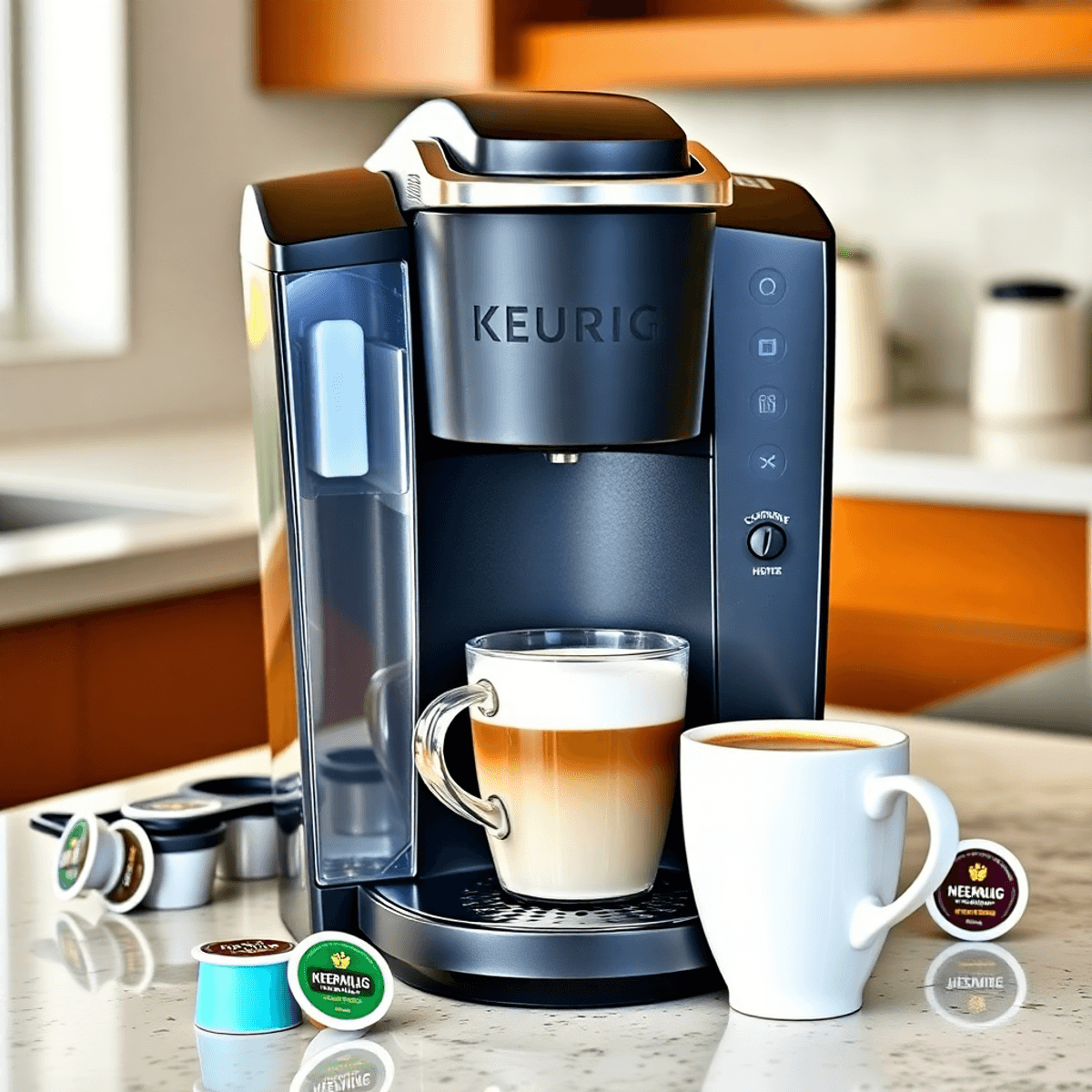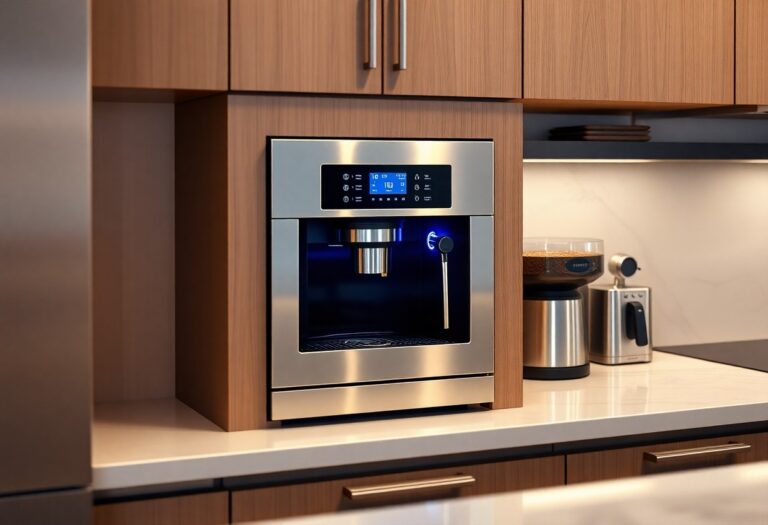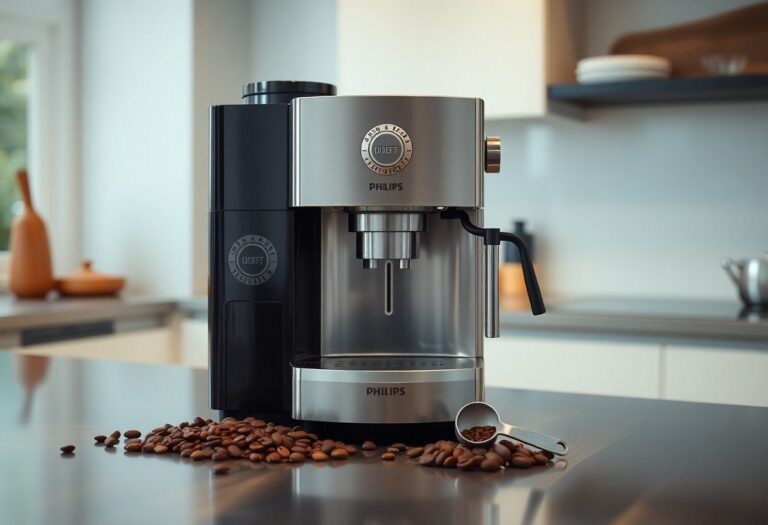How to Clean a Keurig Coffee Machine: Ultimate Maintenance Guide
A Keurig coffee machine is a popular single-serve brewing system known for its convenience and speed in delivering a freshly brewed cup of coffee. With its widespread use in homes and offices, the Keurig has become a staple for coffee lovers looking for quick and consistent results.
Maintaining a Keurig machine is crucial to ensure optimal performance and taste quality. Regular cleaning prevents the buildup of coffee grinds, oils, and mineral deposits that can affect the flavor of your brew. By incorporating routine maintenance into your coffee-making habits, you can prolong the lifespan of your machine and enjoy delicious coffee with every cup.
This ultimate maintenance guide will walk you through essential steps such as daily cleaning routines, descaling procedures, needle maintenance, water filter replacement, and the benefits of consistent upkeep. By following these guidelines, you can keep your Keurig coffee machine in top condition and savor the perfect cup of coffee every time.
1. Regular Cleaning
Maintaining a Keurig coffee machine starts with a consistent cleaning routine. Daily cleaning keeps the machine free from coffee splatters and water residue that can affect taste and function.
Daily Cleaning Routine:
- Wipe down the exterior of your Keurig with a damp cloth to remove any spills or dust.
- Empty and clean the drip tray. Coffee drips and water accumulation here can lead to sticky buildup or mold if left unattended.
- Refill the water reservoir with fresh water before each brew to ensure optimal flavor extraction.
Weekly Cleaning Tasks:
Certain parts require more thorough cleaning on a weekly basis to prevent mineral buildup and maintain hygiene:
- Detach removable components such as the water reservoir, lid, drip tray, K-cup holder, and water filter.
- Wash these parts with warm, soapy water. Avoid using harsh detergents that may leave residues affecting taste.
- Rinse all parts thoroughly under running water to remove soap traces.
- Let components air dry completely before reassembling. This helps prevent lint or moisture-related issues inside the reservoir.
Regular cleaning protects your machine from coffee oils and mineral deposits that accumulate over time. Neglecting this routine may cause clogs, affect brewing temperature, and result in stale or off-flavored coffee.
You will notice smoother operation and longer lifespan by sticking to daily wiping combined with weekly washing of removable parts. This foundation prepares your Keurig for deeper maintenance steps like descaling and needle cleaning, which target internal buildup not addressed by surface cleaning alone.
2. Descaling Your Keurig Machine
Descaling your Keurig machine is a crucial maintenance task to ensure optimal performance and the best-tasting coffee. Here are the key points to consider:
1. Frequency of Descaling
The frequency of descaling your Keurig machine depends on how often you use it and the hardness of your water. For daily users, descaling every 3 to 6 months is recommended, with more frequent descaling needed for harder water.
2. Descaling Process
You can descale your Keurig machine using either vinegar or a Keurig Descaling Solution. Here is a step-by-step guide to descaling:
- Fill the water reservoir halfway with vinegar or descaling solution and then top it off with water.
- Start a brew cycle without inserting a K-cup, selecting the largest cup size.
- Repeat the brew cycle until the reservoir is empty, allowing each cycle to complete.
- Let the machine sit for about 30 minutes to allow the solution to work on removing scale buildup.
- Rinse the reservoir thoroughly and refill it with fresh water.
- Run multiple brew cycles with just water to ensure all traces of vinegar or descaling solution are flushed out.
3. Importance of Rinsing
After descaling your Keurig machine, it is essential to rinse it thoroughly to remove any residue left behind by the vinegar or descaling solution. This step ensures that there are no lingering tastes or odors from the cleaning process that could affect the flavor of your coffee.
By following these steps for descaling your Keurig machine, you can maintain its performance and prolong its lifespan, ensuring that you continue to enjoy delicious coffee with every brew.
3. Cleaning the Needles
Keurig machines rely on sharp needles to puncture K-cups and allow water to flow through the coffee grounds. These needles are essential for proper brewing but tend to collect coffee residue, grounds, and mineral deposits over time. This buildup can cause clogged needles, leading to weak or incomplete brews, leaks, or error messages on your machine.
Signs of clogged needles include:
- Coffee leaking from the machine during brewing
- Longer brew times than usual
- Weak or watery coffee
- Error messages related to water flow
Regular Keurig needle cleaning is crucial to keep your brewer functioning smoothly and maintain the quality of your coffee. For more tips on preventing clogs, check out this helpful resource.
How to Clean Clogged Needles
Cleaning needles is straightforward and requires minimal tools:
- Unplug the machine for safety before starting.
- Remove the pod holder and funnel assembly by lifting or unscrewing depending on your model.
- Locate the entrance needle (top) and exit needle (bottom). Both needles can accumulate debris.
- Use a paperclip, needle cleaning tool, or a small brush designed for Keurig machines to gently dislodge any coffee grounds stuck in the needles.
- Carefully insert the tool into each needle’s opening and twist or push lightly until debris is cleared.
- Rinse the pod holder and funnel parts under warm running water to wash away loosened particles.
Importance of Thorough Rinsing
After cleaning, run at least two cycles of plain water through the machine without a K-cup. This step flushes out any remaining debris from the needles or internal components that could affect future brews. Neglecting rinsing might lead to clogged filters again or an off taste caused by residual grounds.
Regular maintenance including Keurig needle cleaning ensures consistent extraction, prevents blockages, and extends your machine’s lifespan while delivering fresh-tasting coffee every time you brew.
4. Replacing Water Filters for Better Taste Quality
Your Keurig water filter is essential for getting the best flavor out of every cup you brew. It does this by removing impurities like chlorine, calcium, and other minerals that are often present in tap water. These substances can not only alter the taste but also harm your machine over time, causing mineral buildup and potential blockages.
Frequency of Filter Replacement
- Replace the Keurig water filter every two to three months, depending on how often you use the machine.
- If your tap water is particularly hard or heavily chlorinated, consider replacing the filter closer to every two months.
- For infrequent use, you might stretch replacement intervals but never exceed three months to maintain optimal performance.
How to Replace Your Keurig Water Filter
- Remove the old filter from the filter holder inside the water reservoir.
- Soak a new filter cartridge in fresh water for about five minutes to activate it.
- After soaking, rinse the filter under running water for approximately 60 seconds to wash away any loose carbon dust or debris.
- Insert the rinsed filter into the filter holder securely.
- Lock the filter holder back into place in the reservoir.
Following these steps will ensure that your Keurig water filter works properly, eliminating any weird tastes caused by impurities and preventing mineral deposits from damaging internal parts. Regularly changing the filter also enhances your cleaning and descaling routines, resulting in consistently delicious coffee with every cup.
5. Enjoying the Benefits of Regular Maintenance
Keurig maintenance benefits, optimal performance
Regular maintenance of your Keurig machine ensures that it functions optimally, leading to consistent brewing temperatures and proper extraction of flavors from your coffee pods.
By following a regular cleaning and descaling routine, you can prevent any buildup of coffee residues or mineral deposits that might alter the taste of your brewed coffee. This results in a more consistent and enjoyable coffee experience every time you brew.
Proper maintenance not only enhances the taste of your coffee but also prolongs the lifespan of your Keurig machine. By preventing clogs and ensuring all components are clean and functioning correctly, you can enjoy delicious coffee for years to come. Additionally, embracing preventive maintenance can further enhance these benefits, ensuring your machine remains in top shape while providing you with the best possible coffee experience.
Conclusion
Taking good care of your Keurig coffee machine is the key to ensuring it continues to deliver that perfect cup of coffee every time. By following a regular maintenance routine, you not only prolong the lifespan of your machine but also guarantee a fresh-tasting brew with every use. Remember, a little effort in cleaning and descaling goes a long way in maintaining optimal brewing performance and preserving the quality of your coffee. So, make it a habit to show your Keurig some love, and it will repay you with consistently delicious coffee that brightens your day. Keep savoring that flavorful cup knowing you’ve mastered the art of Keurig coffee machine care.
FAQs (Frequently Asked Questions)
Why is regular cleaning important for my Keurig coffee machine?
Regular cleaning is essential for maintaining the longevity of your Keurig coffee machine and ensuring optimal performance. It prevents buildup that can affect taste quality and keeps the machine functioning smoothly.
How often should I descale my Keurig machine and what is the best method?
Descaling frequency depends on your usage and water hardness level, but generally, it should be done every 3 to 6 months. You can descale using a vinegar solution or a Keurig Descaling Solution by following step-by-step instructions to remove mineral buildup effectively.
What is the proper way to clean the needles in a Keurig machine?
The needles can get clogged over time, affecting brew quality. Clean them carefully using a paperclip or specialized cleaning tool to remove debris. After cleaning, thoroughly rinse to avoid any residue impacting your coffee taste.
How do water filters improve the taste of coffee from a Keurig machine?
Water filters help maintain the taste quality by removing impurities from water used in brewing. Replacing filters regularly based on usage and water quality ensures fresh-tasting coffee and protects the machine from mineral buildup.
What are the key steps involved in maintaining my Keurig coffee machine for optimal performance?
Key maintenance steps include daily cleaning of the exterior and drip tray, weekly washing of removable parts, regular descaling, cleaning clogged needles, and timely replacement of water filters. Following these steps maintains brewing consistency and extends machine life.
What benefits can I expect from following a regular maintenance routine for my Keurig machine?
Regular maintenance leads to improved brewing performance, consistent taste quality, prevention of clogs and buildup, longer lifespan of your machine, and an overall enjoyable coffee experience every time you brew.







